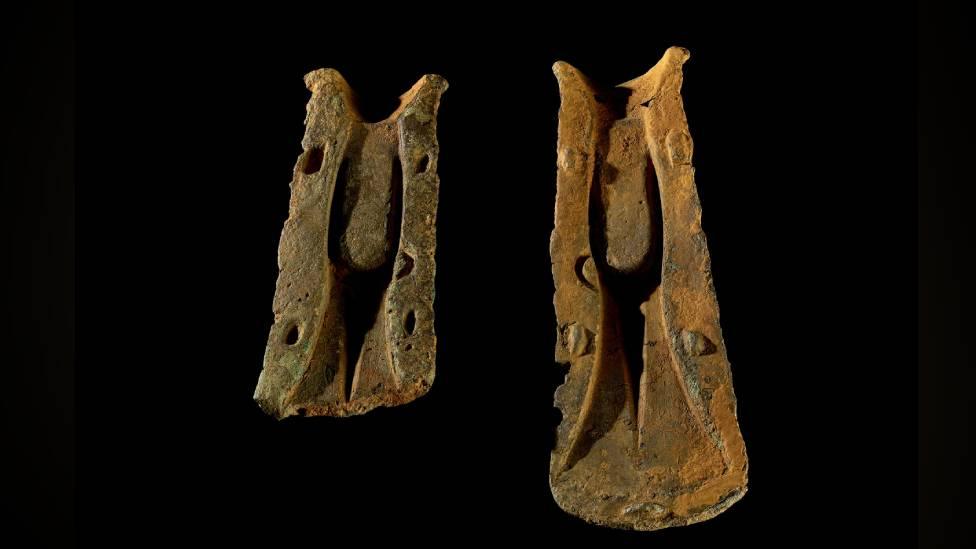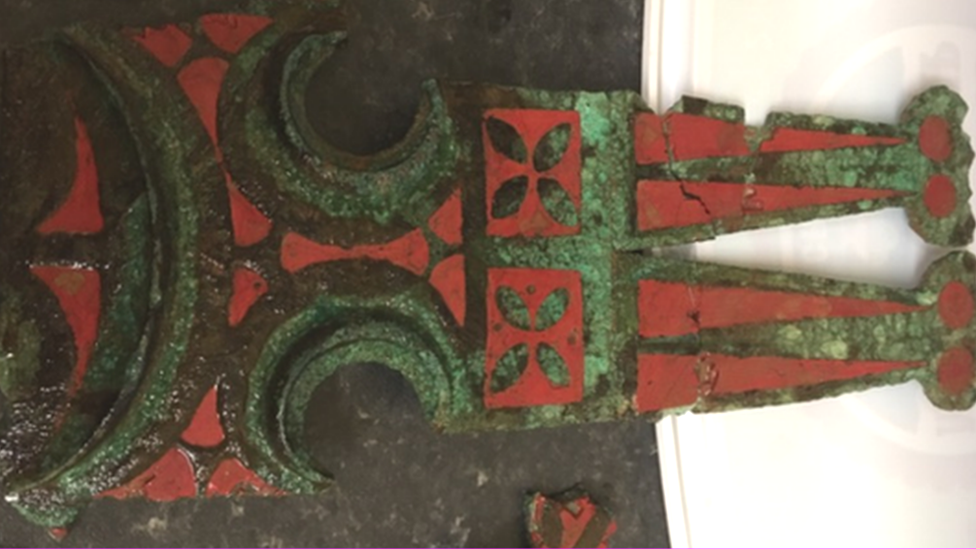Great Orme: Rare Bronze Age axe mould declared treasure
- Published

The Bronze Age moulds, used to make axe heads, are about eight inches long
A rare Bronze Age artefact linked to an ancient copper mine has been declared treasure.
Two pieces of a mould made about 3,400 years ago to make axes were found in 2017 on Conwy mountain.
The metal detectorist who made the find argued the two halves of the mould served no purpose on their own and were thus not treasure.
The coroner followed a precedent set in Pembrokeshire where separate parts of a chariot were classified as treasure.
Experts said it was likely that the moulds were linked to the Bronze Age copper mines on Llandudno's Great Orme. Tin from Cornwall was mixed with molten copper to form them.
The two mould pieces were found by George Borrill in rough pastureland, about 18 inches underground. They are about eight inches long and said to be remarkably well preserved.
The experienced mental detectorist, who has unearthed several artefacts, reported the find to the authorities.
"They were upright and with a hole in the top. I thought they were something to put an old railing in," he said.
Experts found the moulds used in the Middle Bronze Age to cast palstaves, a type of axe.
At an inquest in Ruthin, Mr Borrill argued because the two halves served no purpose on their own and were found touching and face-to-face they should be regarded as one artefact.
"One was no good without the other and I don't believe it is treasure," he said.

Bronze Age copper mines on the Great Orme are the 'likely' source of the artefacts
But Adam Gwilt, principal curator at the National Museum Wales, said they were two discrete items with different decorations on them.
He said that meant under the Treasure Act, they should be classified as treasure.
Mr Gwilt told the hearing that there were precedents for such a ruling, including parts of a chariot found in Pembrokeshire.
In a report to the coroner he said they dated from about 1400-1275 BC and were very rare, similar objects having been found at only seven other sites in Britain.
It was significant, he said, that they were found only about three miles from the Great Orme copper mine, one of the largest in Europe, and it was likely that they had been buried in a ceremony at the end of their life.
Kate Sutherland, the assistant coroner for north Wales east and central, said that on the balance of probabilities they should be considered as two distinct items and therefore classed as treasure.
After the hearing, Mr Borrill said he did not agree with the judgment but was not surprised.
"If it had not been declared as treasure I would have given the National Museum the first chance to buy it," he said.
Related topics
- Published10 January 2022

- Published29 October 2019

- Published15 June 2019

- Published4 April 2014

- Published31 January 2019
